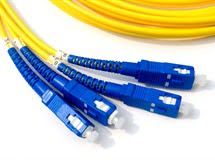And there are
other factors. The performance of network infrastructure – LANs and WANs – is
improving and over the next year will get better still. And storage is getting
bigger much faster. A recent release from Samsung is a DVR hustling 4 x 2TB
HDDs as standard. Hard drives are not the only news when it comes to storage.
NAND memory is increasing rapidly and its costs falling to such an extent that
the concept of cameras as edge devices with huge built-in storage is no longer
impossible but guaranteed, as pioneers like Mobotix have proved.
So what’s going
to be new in 2010? Things we are looking out for include a growth in wireless
networking, an increasing swing to 1080p HD and the prevalence of open
architecture management solutions. We talked open management solutions last
issue but the hunger for them and their vital importance to every networked
system is something new.
Part of the issue
is that security managers and informed end users are embracing open management
solutions in ever greater numbers. It’s a trend driven by the obvious – a
desire to select any networked security device for use in an off-the-shelf
network without being clamped to proprietary devices.
Makers of IP
surveillance cameras and networked access control solutions are responding by offering
management software developers their device drivers in to allow seamless
integration with leading management solutions. It’s a fascinating and in some
ways frightening time. What this era of openness means is that the only things
that will separate hardware manufacturers will be outright performance and
price.
Muddying the
waters will be confusion over the comparative performance of the multitudinous HD,
megapixel and high resolution analogue standards. There are also residual
issues like network latency in lower cost solutions and the inability of
commonly used consumer monitors to support the CCTV industry’s highest
resolutions pixel for pixel.
One thing that
was noticeable in the bottom half of 2008 and again throughout in 2009 was the
fact that security solutions are currently on a drip feed from a funding point
of view. This is evidenced in a number of ways. Partly it’s the retention of
massive amounts of legacy hardware in the shape of coax and analogue cameras.
The other sign is the modular nature of upgrades. Systems are being upgrades a
section at a time.
Another issue is
that serious networked solutions demand a serious spend and while companies can
justify this from the point of view of data networks supporting core business
units like sales, accounting and inventory, they’re not so keen to spend big
when it comes to what many see as a utility application – security.
Experience has
shown that only smaller surveillance systems tend to run on shared data
networks. For the rest, dedicated subnets are the most common solution and
doing these properly is expensive. Those applications that demand high
resolutions on hundreds of inputs in real time need purpose-built
infrastructure and that’s hugely expensive.
This is an
interesting dilemma and one that in some applications is going to support the
growth of cameras as edge devices incorporating onboard storage. So what’s the
result going to be? The continued installation of hybrid solutions will be the
most obvious result.
Something else
that’s clear is the importance of networking to the latest generation of access
control solutions, including systems like Cardax FT and HID’s Vertx, as well as
Concept and Challenger solutions. Networking continues to increase the
flexibility and power of access control immeasurably and surveillance HLIs are
our industry’s next killer app.
So – who is
driving the changes? Across the large number of applications we’ve covered over
the past 18 months it’s a group of savvy security managers who are doing the
pushing all of whom have an evangelistic belief in the capability of networking
to enhance primary security operations.








